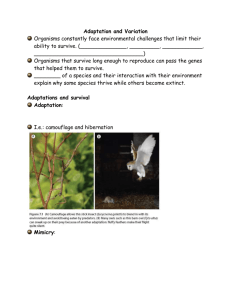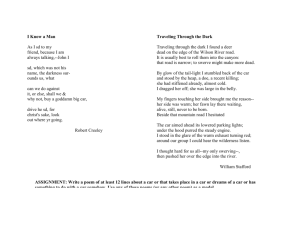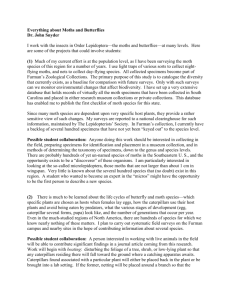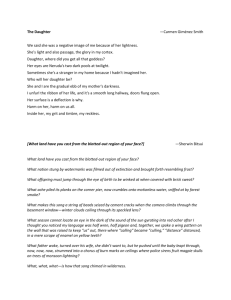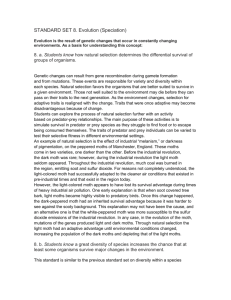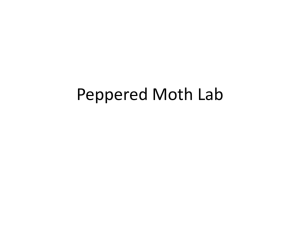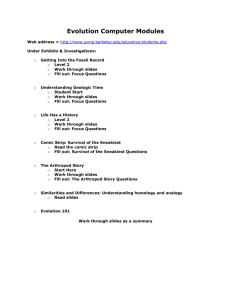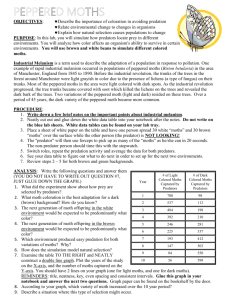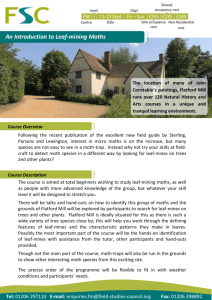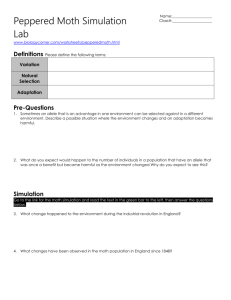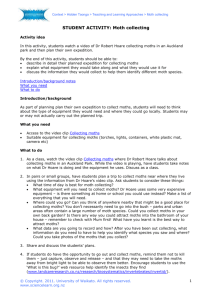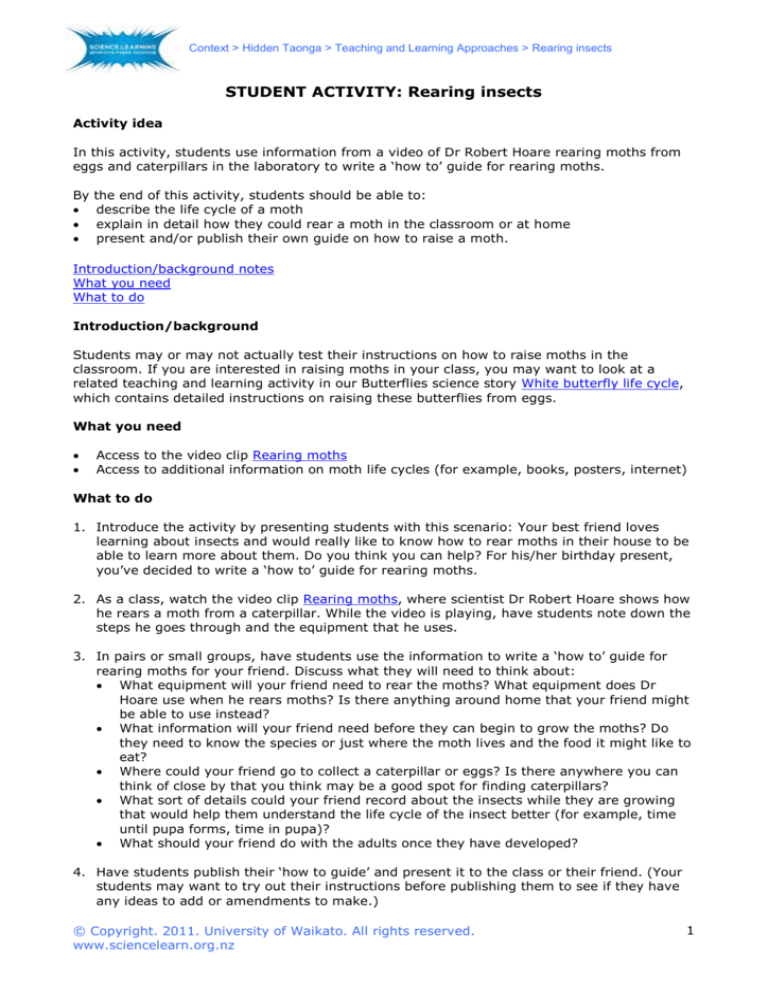
Context > Hidden Taonga > Teaching and Learning Approaches > Rearing insects
STUDENT ACTIVITY: Rearing insects
Activity idea
In this activity, students use information from a video of Dr Robert Hoare rearing moths from
eggs and caterpillars in the laboratory to write a ‘how to’ guide for rearing moths.
By
the end of this activity, students should be able to:
describe the life cycle of a moth
explain in detail how they could rear a moth in the classroom or at home
present and/or publish their own guide on how to raise a moth.
Introduction/background notes
What you need
What to do
Introduction/background
Students may or may not actually test their instructions on how to raise moths in the
classroom. If you are interested in raising moths in your class, you may want to look at a
related teaching and learning activity in our Butterflies science story White butterfly life cycle,
which contains detailed instructions on raising these butterflies from eggs.
What you need
Access to the video clip Rearing moths
Access to additional information on moth life cycles (for example, books, posters, internet)
What to do
1. Introduce the activity by presenting students with this scenario: Your best friend loves
learning about insects and would really like to know how to rear moths in their house to be
able to learn more about them. Do you think you can help? For his/her birthday present,
you’ve decided to write a ‘how to’ guide for rearing moths.
2. As a class, watch the video clip Rearing moths, where scientist Dr Robert Hoare shows how
he rears a moth from a caterpillar. While the video is playing, have students note down the
steps he goes through and the equipment that he uses.
3. In pairs or small groups, have students use the information to write a ‘how to’ guide for
rearing moths for your friend. Discuss what they will need to think about:
What equipment will your friend need to rear the moths? What equipment does Dr
Hoare use when he rears moths? Is there anything around home that your friend might
be able to use instead?
What information will your friend need before they can begin to grow the moths? Do
they need to know the species or just where the moth lives and the food it might like to
eat?
Where could your friend go to collect a caterpillar or eggs? Is there anywhere you can
think of close by that you think may be a good spot for finding caterpillars?
What sort of details could your friend record about the insects while they are growing
that would help them understand the life cycle of the insect better (for example, time
until pupa forms, time in pupa)?
What should your friend do with the adults once they have developed?
4. Have students publish their ‘how to guide’ and present it to the class or their friend. (Your
students may want to try out their instructions before publishing them to see if they have
any ideas to add or amendments to make.)
© Copyright. 2011. University of Waikato. All rights reserved.
www.sciencelearn.org.nz
1


